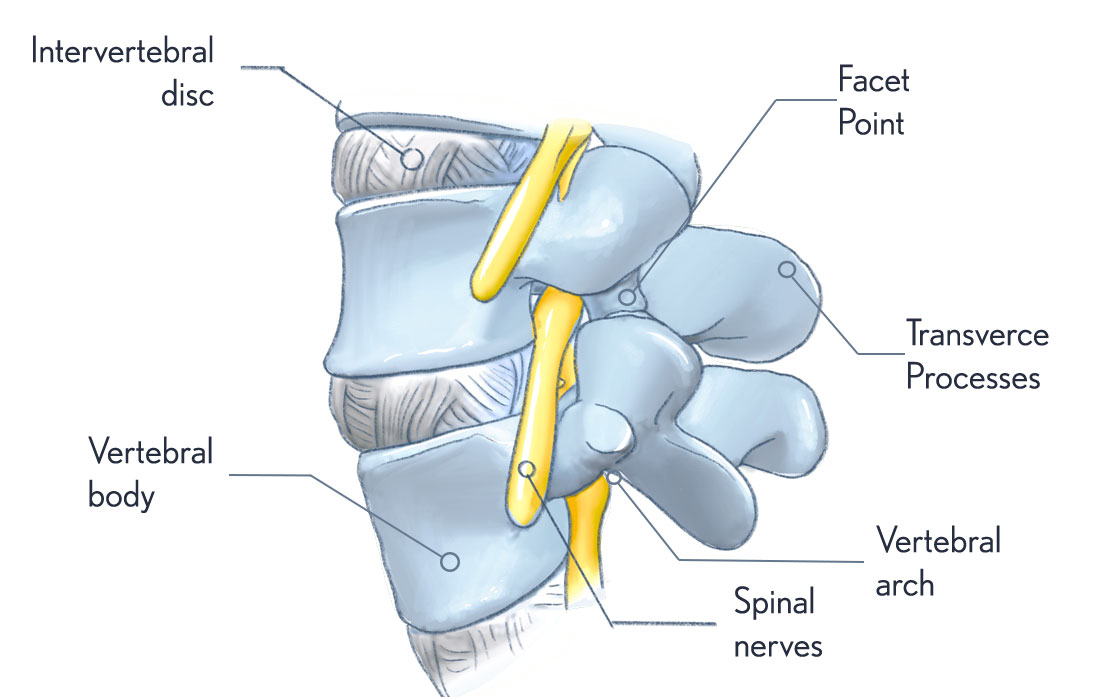Your spine
The spine plays an extremely important role in human anatomy.
It provides a firm anchor for many of the muscles that support the upper body, allowing for a wide range of movement and flexibility. It also protects the spinal cord – your body’s central nervous structure that allows your brain to communicate with the rest of your body.
The spine runs all the way from the base of the skull to the base of the torso, and is made up of 24 bones called vertebrae.
These bones are grouped into different ‘regions’. From top to bottom, these regions are called:
- The cervical spine
- The thoracic spine
- The lumbar spine
- The sacrum
- The coccyx
This image shows how all these groups link together to make the whole spine. This person would be facing right.


Vertebrae
Vertebrae are the interlocking bones that give your spine structure, and together form your ‘spinal column’.
- The vertebral body is the load-bearing part of your spine, supporting posture and movement.
- The vertebrae in each region of the spine – from the cervical spine all the way down to the coccyx have unique features that help them do exactly the job your body needs them to do.
- The vertebrae in the uppermost regions of your spine – the cervical, thoracic, and lumbar regions – are interconnected by facet joints that allow your spine to flex, supporting everyday movement.
The vertebrae in each region of the spine – from the cervical spine all the way down to the coccyx – have unique features that help them do exactly the job your body needs them to do.
The vertebrae in the uppermost regions of your spine – the cervical, thoracic, and lumbar regions – are interconnected by facet joints that allow your spine to flex, supporting everyday movement.
These vertebrae are separated by ‘intervertebral discs’ providing additional weight-bearing support and controlled flexibility.
Intervertebral discs
Intervertebral discs are made of two parts:
- A tough and fibrous outer layer (annulus fibrosis)
- A soft, gelatinous center (nucleus pulposus).
These work together to allow the spine to move, preventing friction between vertebrae, and absorbing any shocks that may otherwise damage the spine. The joints between vertebrae are called ‘facet joints’.
Spinal vertebrae align so that their vertebral canals form a hollow, bony tube, housing the spinal cord and protecting it from damage and infection.
Between the vertebrae are small spaces known as nerve root canals that allow spinal nerves to exit the spinal cord and connect to the various regions of the body.



